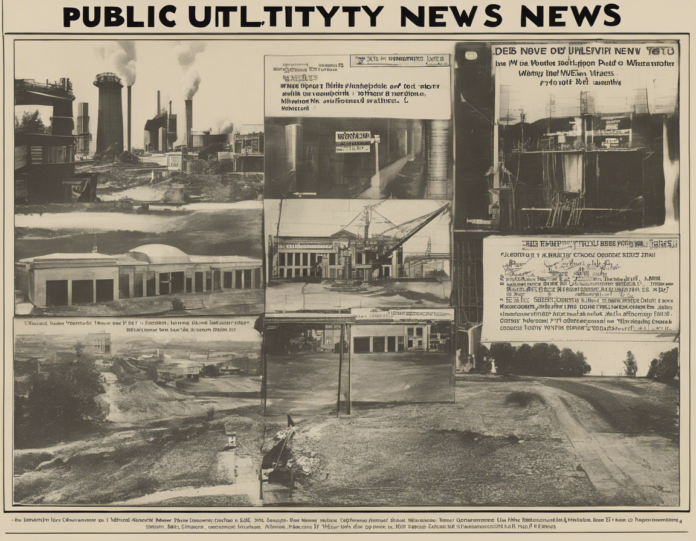The Public Utility Industry plays a crucial role in providing essential services to communities worldwide. From electricity and water to natural gas and telecommunications, public utilities are essential for daily life. Keeping abreast of the latest trends and updates in this sector is vital for both industry professionals and consumers. In this article, we will delve into some of the latest public utility industry updates, including technological advancements, regulatory changes, sustainability initiatives, and more.
Technological Advancements in the Public Utility Industry
Technological innovation is rapidly transforming the public utility sector. Utilities are increasingly embracing smart grid technologies that enhance efficiency, reliability, and sustainability. Advanced metering infrastructure (AMI) allows for real-time monitoring of energy consumption, enabling utilities to optimize their operations and provide customers with valuable insights into their usage patterns. Furthermore, grid modernization efforts are incorporating renewable energy sources such as solar and wind power, reducing carbon footprints and promoting environmental sustainability.
Impact of Regulatory Changes on Public Utilities
Regulatory frameworks significantly influence the operations of public utilities. Recent regulatory changes have focused on promoting competition, consumer protection, and cybersecurity. Utilities are facing pressure to enhance data security measures to safeguard sensitive customer information. Additionally, regulations aimed at promoting energy efficiency and renewable energy integration are driving utilities to invest in innovative solutions to meet evolving standards while ensuring cost-effectiveness for consumers.
Sustainability Initiatives in the Public Utility Sector
Sustainability has become a top priority for public utilities seeking to reduce their environmental impact and meet carbon emissions targets. Many utilities are investing in energy storage technologies to support renewable energy integration and enhance grid stability. Moreover, initiatives such as demand response programs empower customers to manage their energy usage more efficiently, contributing to a more sustainable energy ecosystem. Collaborations between utilities and governmental agencies are driving initiatives to promote energy conservation and environmental stewardship.
Enhancing Customer Engagement and Experience
Customer engagement is a key focus area for public utilities looking to enhance service quality and satisfaction. Utilities are leveraging data analytics and digital platforms to provide personalized services, optimize billing processes, and offer innovative energy management solutions. Mobile apps and online portals enable customers to access their account information, report outages, and request services conveniently. By embracing customer-centric strategies, utilities can build trust, improve communication, and foster loyalty among their customer base.
The Role of Public-Private Partnerships in Utility Infrastructure
Public-private partnerships (PPPs) are increasingly being utilized to develop and maintain utility infrastructure projects. By leveraging the expertise and resources of both public and private entities, these partnerships enable the efficient delivery of essential services while sharing risks and responsibilities. PPPs can be instrumental in funding large-scale projects such as water treatment plants, electric grid expansions, and communication networks, driving innovation and sustainability in the public utility sector.
Key Challenges Facing the Public Utility Industry
Despite the advancements in technology and sustainability efforts, the public utility sector faces several challenges. Aging infrastructure remains a significant concern, requiring investment and modernization to ensure reliability and resilience. Cyber threats pose a growing risk to utility operations, necessitating robust cybersecurity measures. Regulatory uncertainty and changing customer expectations also create complexities for utilities striving to balance compliance with innovation and customer satisfaction.
Conclusion
In conclusion, the public utility industry is undergoing rapid transformation driven by technological innovation, regulatory changes, sustainability initiatives, and evolving customer demands. Staying informed about the latest industry updates is essential for professionals and consumers alike to understand the shifting landscape of public utilities and its impact on service delivery, sustainability, and reliability. By embracing innovation, collaboration, and sustainable practices, public utilities can adapt to changing market dynamics and continue to provide essential services to communities worldwide.
Frequently Asked Questions (FAQs)
1. What are some examples of smart grid technologies in the public utility industry?
Smart grid technologies in the public utility industry include advanced metering infrastructure (AMI), distribution automation systems, grid modernization solutions, and demand response programs.
2. How do regulatory changes impact public utilities?
Regulatory changes can influence pricing structures, service quality standards, environmental compliance requirements, cybersecurity protocols, and investment decisions for public utilities.
3. What role do public-private partnerships play in utility infrastructure development?
Public-private partnerships facilitate collaboration between public entities and private companies to fund, develop, and maintain utility infrastructure projects, leveraging shared expertise and resources.
4. What are the key sustainability initiatives adopted by public utilities?
Public utilities are investing in renewable energy integration, energy storage solutions, demand response programs, energy conservation initiatives, and environmental stewardship practices to promote sustainability.
5. How are public utilities enhancing customer engagement and experience?
Public utilities are leveraging data analytics, digital platforms, mobile apps, and online portals to provide personalized services, optimize billing processes, and offer innovative energy management solutions to enhance customer engagement and experience.










